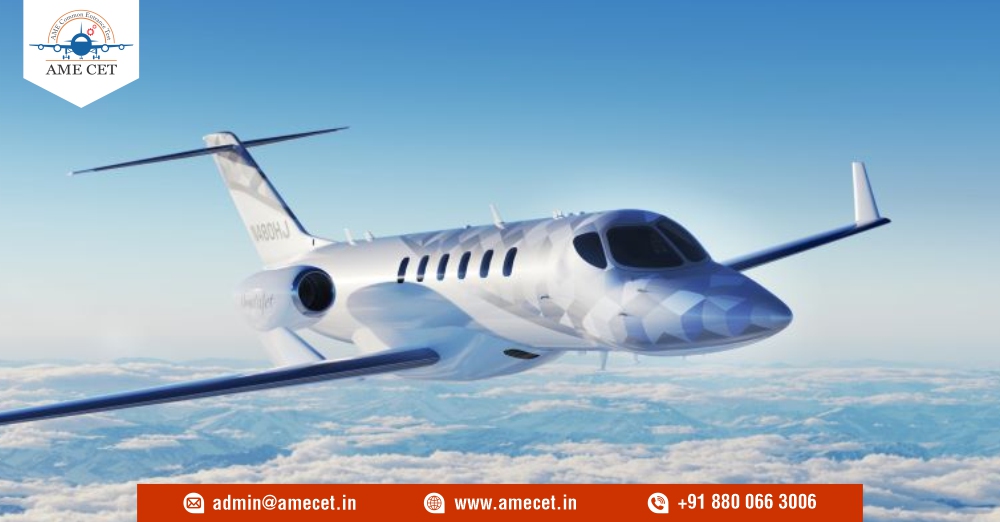
The manufacturer aims for approval in 2028, with entry into service that year.
In a follow-up to the introduction of the HondaJet 2600 concept at the National Business Aviation Association’s Business Aviation Conference and Expo in October 2021, Honda Aircraft Co. has made its next move in bringing a new model into its lineup.
On Tuesday, the OEM revealed that development continues on the project, with its official “commercialization” or plan to pursue type certification on the clean-sheet light jet. Intended to be a midsize jet in a light jet’s body, the HondaJet 2600 is aimed at a 2,625 nm range (four passengers and one pilot, NBAA IFR) and 450 ktas maximum cruise speed—but at 20 percent better fuel efficiency than other light jets, and a 40 percent improvement over midsize models.
The company targets FAA type certification in 2028, with entry into service as a single-pilot-operated platform. Up to 11 people can be seated on board, with the option for nine or 10 passengers depending on crew requirements.
A Look at the HondaJet 2600 Concept
“The commercialization of our new light jet represents Honda’s next chapter of skyward mobility, which further expands the potential of people’s lives,” said Hideto Yamasaki, president and CEO of Honda Aircraft. “By building on the expertise behind our technological innovations, we will accelerate the development of the program with sustainability a key element throughout.”
In a follow-up to the introduction of the HondaJet 2600 concept at the National Business Aviation Association’s Business Aviation Conference and Expo in October 2021, Honda Aircraft Co. has made its next move in bringing a new model into its lineup.
On Tuesday, the OEM revealed that development continues on the project, with its official “commercialization” or plan to pursue type certification on the clean-sheet light jet. Intended to be a midsize jet in a light jet’s body, the HondaJet 2600 is aimed at a 2,625 nm range (four passengers and one pilot, NBAA IFR) and 450 ktas maximum cruise speed—but at 20 percent better fuel efficiency than other light jets, and a 40 percent improvement over midsize models.
The company targets FAA type certification in 2028, with entry into service as a single-pilot-operated platform. Up to 11 people can be seated on board, with the option for nine or 10 passengers depending on crew requirements
A Look at the HondaJet 2600 Concept.
“The commercialization of our new light jet represents Honda’s next chapter of skyward mobility, which further expands the potential of people’s lives,” said Hideto Yamasaki, president and CEO of Honda Aircraft. “By building on the expertise behind our technological innovations, we will accelerate the development of the program with sustainability a key element throughout.”
Supply partners include Garmin, for the G3000 integrated flight deck, Williams International and its FJ44-4C engines, Spirit AeroSystems providing the fuselage, and Aernnova for other aerostructures and components. Fabrication of the first airframe is underway as Honda Aircraft completes initial engineering on the program.
On June 13 and 14, Honda Aircraft will be hosting a supplier conference at its global headquarters in Greensboro, North Carolina, for those involved in the HondaJet 2600 program.
career paths for students studying aeronautical engineering, aerospace engineering, mechanical engineering, and related fields. Some potential career opportunities could include:
-
Aircraft Design Engineer: Work on designing and developing aircraft components, systems, and structures, contributing to the creation of innovative and efficient aircraft models.
-
Aerospace Systems Analyst: Analyze and optimize aircraft systems, such as avionics, propulsion, and aerodynamics, to ensure optimal performance and safety.
-
Flight Test Engineer: Participate in flight testing programs, collecting data and ensuring that new aircraft models meet safety and performance standards.
-
Aircraft Maintenance Technician: Maintain and repair aircraft, ensuring that they are in optimal condition for safe operation.
-
Research and Development Engineer: Engage in research projects focused on enhancing aircraft technologies, materials, and systems.
-
Quality Assurance Specialist: Monitor and ensure that aircraft manufacturing processes adhere to quality and safety standards.
-
Project Manager: Coordinate various aspects of aircraft development projects, from design to certification, ensuring timelines and budgets are met.
-
Aviation Safety Inspector: Collaborate with aviation authorities to ensure that aircraft designs and operations comply with regulatory standards and safety protocols.
-
Data Analyst in Aerospace: Analyze flight data and performance metrics to improve aircraft design and operations.
-
Aerospace Consultant: Provide specialized expertise to companies and organizations in the aviation and aerospace industries.
These are just a few examples of potential career paths in the aerospace industry, particularly within a company like Honda Aircraft. It's important for students interested in pursuing careers in this field to stay updated on industry developments, gain practical experience through internships or co-op programs, and continue building relevant skills to stand out in a competitive job market.
Category
-
Aircraft Maintenance Engineering (DGCA) (62)
-
(269)
-
Cabin Crew (1)
-
Aerospace Engineering (3)
-
Aeronautical Engineering (2)
-
Airport Management (5)
-
Aircraft Maintenance Engineering (EASA) (6)
-
Airport Ground Staff (1)
-
Commercial Pilot License(CPL) (51)
-
Aircraft Maintenance Engineering (BTech/BE) (1)
-
B.Sc. in Aviation (1)
-
AME CET (5)
